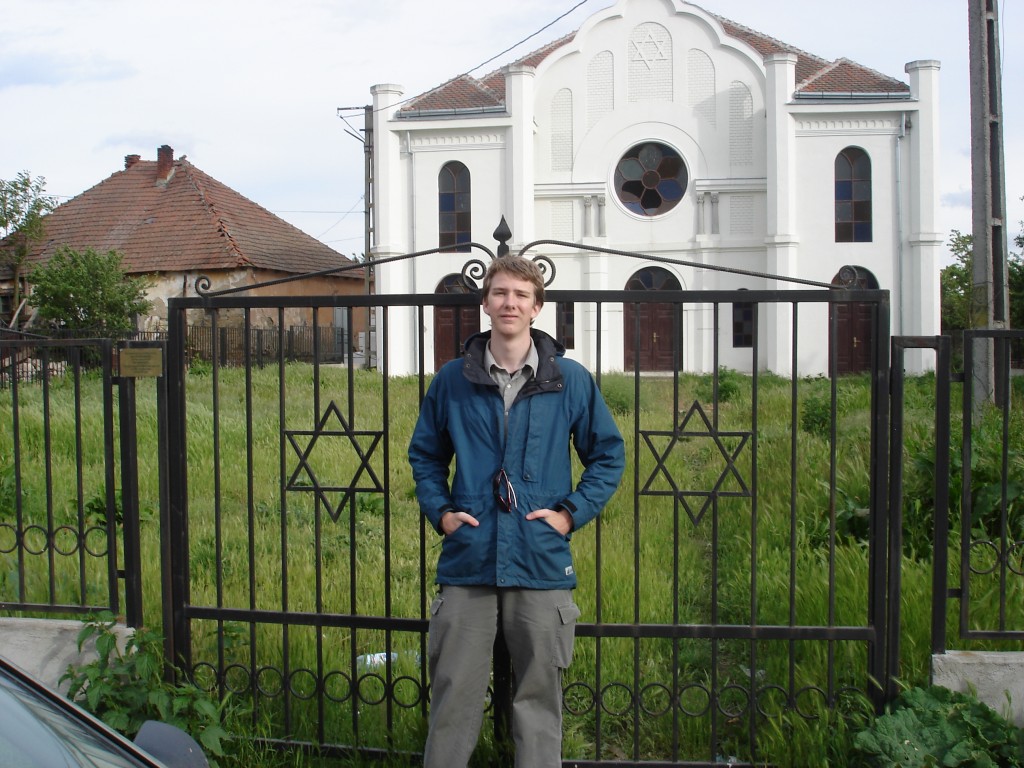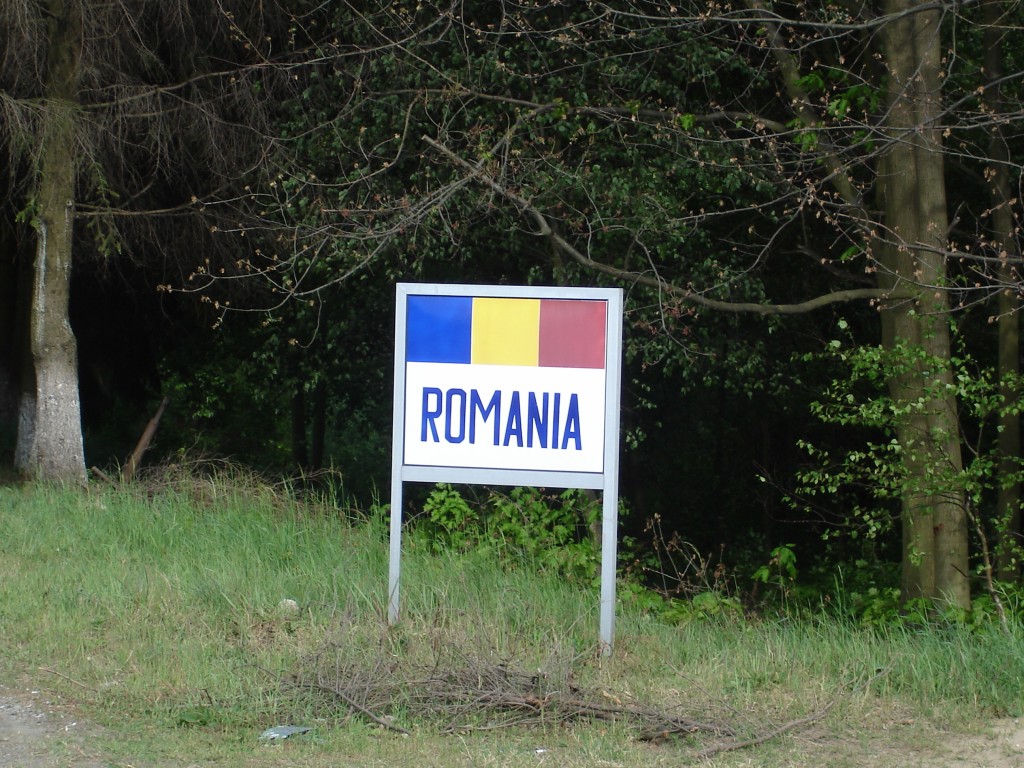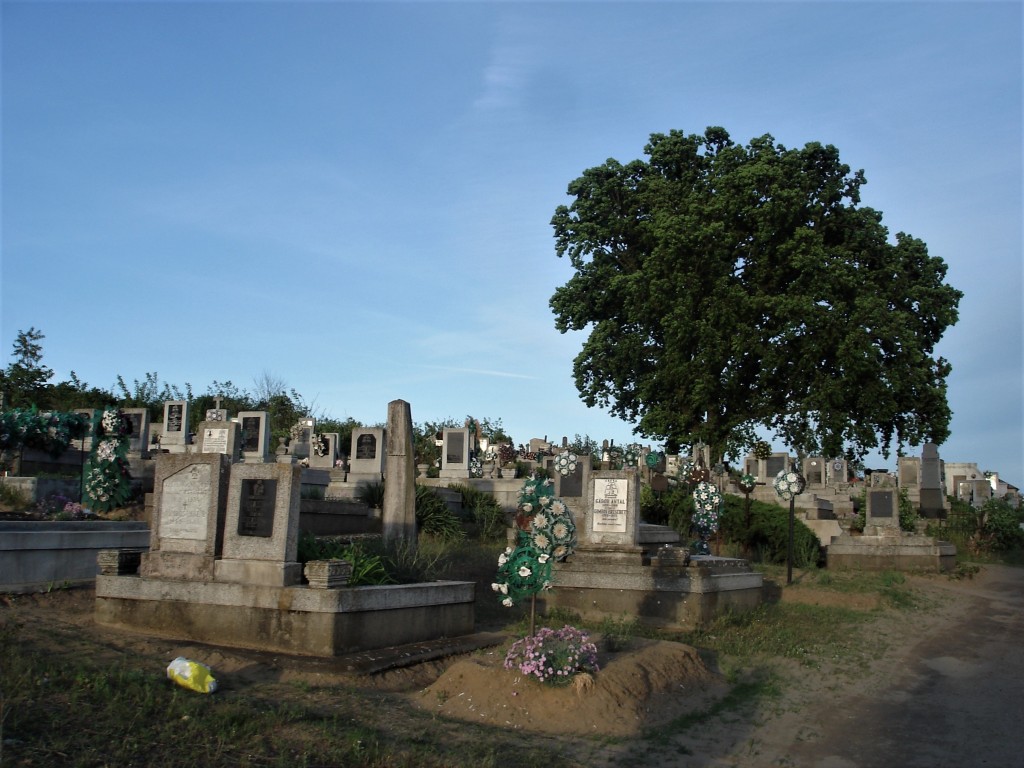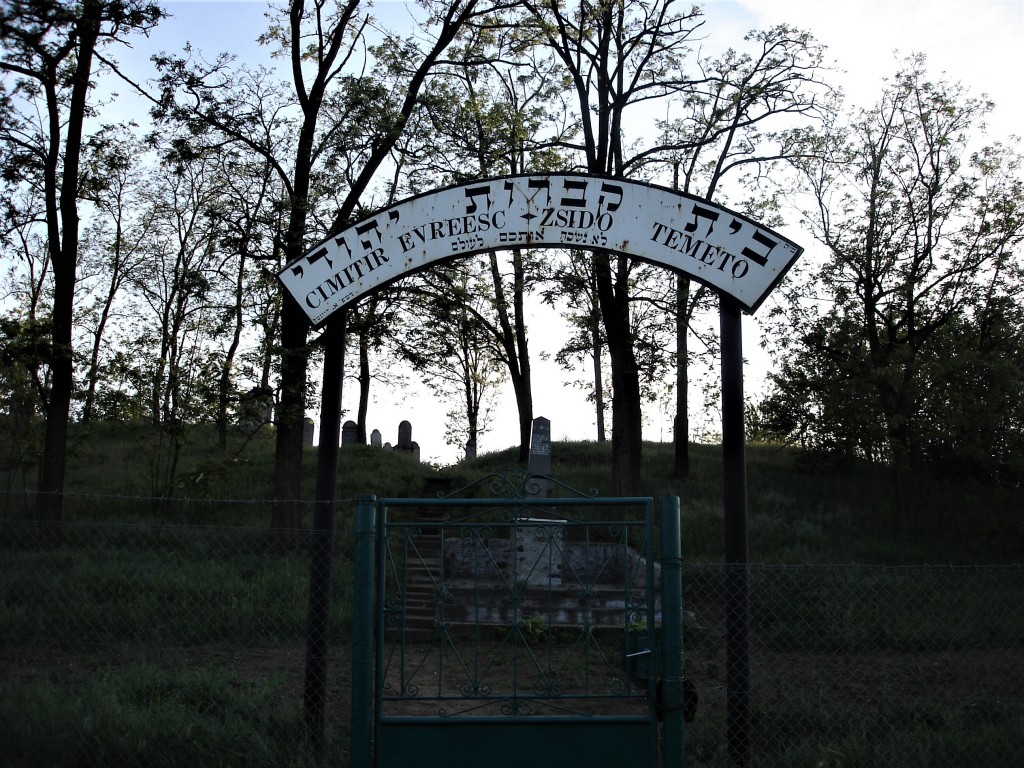Our attempt to hitch-hike out of Prague was a disaster. We had selected a spot, with Filip’s advice, which by the logic of hitching should have been fine. However, it turned out to be torn up with construction. The only practical spot to hitch was high up on a ramp with only moderate traffic. We waited an hour and a half before getting a lift from two young women, who took us a few kilometers, to a service station. This should have been perfect, because it was the last station serving outbound traffic towards Brno. There was a steady stream of traffic, and a spot that looked ideal.
Six and a half hours later, we gave up. We had been passed up by thousands of cars. It was the Czech national holiday, and every car seem to be jam-packed with kids, grannies, and luggage. One car even had a rocking chair in its back seat. It rained intermittently. Isaac had never hitched before, and my assurances that it was a viable form of transportation must have looked pretty hollow to him. As the sky darkened, we walked into the nearest village on the fringe of Prague, and took a bus into the nearest metro. Then we proceeded directly to Masaryk Station and purchased train tickets to Debrecen, the Hungarian city nearest out first destination in Romania.
The train left twenty minutes late, which worried us, because there was only a fifteen minute layover for our connection at Szolnok. The conductors assured us that there was nothing to worry about. We slept fitfully on the train, accompanied part of the way by a student from Liberec returning to school in Brno. When dawn broke, we had already passed Budapest, and were cruising across the Great Hungarian Plain (also known as the Alföld, or Pannonian Plain). It was this large, flat region, in the middle part of the Danube watershed, that had attracted the Asian horsemen who brought the non-Indo-European Magyar language into the heart of Europe. A thousand years ago, it was a grass prairie, perfect for raising horses. Today, it’s densely farmed. Its first recorded inhabitants were known to the Romans as the Pannonii, and were probably related to the Illyrians and Dacians. But from the 4th century BC, they were gradually displaced by various Celtic tribes. In Roman times, the western half of the plain was the province of Pannonia, while the eastern half remained outside the empire. When the Western Roman Empire disintegrated in the 5th Century AD, the region became the heart of Attila the Hun’s brief empire in Europe. The Huns were a Turko-Mongolian tribe from the far east, but their hordes were composed of a patchwork of Asian and European barbarians, including Slavic and Germanic tribes. After Attila, the region fell under the control of the Germanic Ostrogoths, Lombards and Gepids, then the by the Turko-Mongolian Avars. The Avars built a kingdom, the Avar Khanate, that lasted for two centuries, and is, in my opinion, understudied and underrated in significance. Its disintegration in the 9th century was followed by the invasion of yet another Asian tribe, the Magyars (Hungarians). All these people were mounted warriors, whose culture and economy focused on the raising of horses. We can assume that, despite these successive invasions, there was a continuity of settled agricultural life, along the riverbanks, that remained from Illyrian and Celtic times, upon which these various mounted warriors imposed their rule and languages.
The modern people of Hungary speak Magyar, which is unrelated to most of the languages of Europe, except for Finnish and Estonian, with which it has a very remote connection. The languages closest to Hungarian are Khanty and Mansi, spoken by two very small tribal peoples along the Ob river in Siberia. Most Europeans find Magyar very difficult to learn, and it sounds quite bizarre to someone who hears it for the first time. Isaac and I could not resist the temptation to call it “Klingon“. It contains no recognizable components or parallels with more familiar languages, so that you will not see anything in Nag yon örülök, hogy megimerhetem (I’m glad to meet you), that will give you any clues to work with. In most of Europe, you can make a good guess at the meaning of a sign in a public place, even if you don’t speak the language. Not so in Hungary.
The train continued to fall behind schedule, and despite the assurances we had been given, we missed the connecting train to Debrecen. Fortunately, it was only an hour wait until the next one. We arrived in Debrecen around suppertime. We did not see much of this city, since we were eager to find a bus that would take us closer to Romania. We stayed on the south side, between the rail and bus stations, and did not see the center. Debrecen was almost completely destroyed in World War II, so most of the buildings we saw were from the Communist era. The streets in that part looked dirty and the buildings still in bad repair. We were probably in the least appealing part of town. Debrecen is the second city of Hungary, and its university is a major research centre
The first place that we were determined to visit was the Transylvanian village of Érmihályfalva (in Romanian, Valea lui Mihai), the birthplace of Isaac’s grandfather. Inquiries at the bus station informed us that the closest we could get to it, by public transportation, was the Hungarian village of Nyírábráni. After that, we would have to go on foot a few kilometers, cross the border, and then go another thirty or so kilometers into Romania.
We got of the bus at the road’s closest approach to the border. From local citizens, we got some directions, using a combination of gestures and hasty readings from a Hungarian phrasebook. We walked down a narrow country road, which rapidly deteriorated into a dirt road, then a car track, then finally a grassy trail winding around a marsh. But ultimately, it rejoined a better road, and, after a bit of trudging, we came up to the border crossing. It was a pretty sleepy one. The bored-looking border guards took their time examining our passports. Isaac holds dual citizenship in Canada and the U.K., and is traveling on his British passport. With Romania having entered the European Union last Christmas, his bona fides were not in question. But they took some time copying down information from my Canadian passport, musing over the computer, and making phone calls. But we were let in. A dog took a shine to us, and trailed us down the road, as we searched for a place to start hitching.
Readers of this blog might find it confusing that sometimes I refer to Transylvania and sometimes to Romania. We had entered the country of Romania, of which Transylvania is a specific region. Romania has three main geographical divisions: Wallachia in the south, Moldavia in the northeast, and Transylvania in the northwest. Wallachia is flat country, centered on the lower Danube, and its population is overwhelmingly ethnic Romanian. Moldavia (or Moldova) is also lowland, and Romanian-speaking, and is culturally and linguistically contiguous to the post-soviet Republic of Moldova. Before World War I, these two regions formed the Kingdom of Romania, which had begun as a principality of the Turkish Ottoman Empire. The very different, and ruggedly mountainous region of Transylvania had, for centuries before that, been part of the multinational Austro-Hungarian Empire. Transylvania had been a principality within the Hungarian Kingdom, which in turn was one of the crowns held by the German-speaking Hapsburg family. In Transylvania itself, there is a diverse population of Hungarians, Szekels (an ethnic group similar to, though distinct from Hungarians), “Saxons“, who speak a number of different German dialects, and Romanians. Jews, Gypsies (Roma), Serbs, Slovaks, and Ruthenians have also formed substantial minorities at various times. These groups have allied with or ranged against each other in intricate patterns over the centuries, and histories of Transylvania tend to be deeply biased according to the ethnic affiliation or symphathy of the writer. The country is mountainous, and much of it is heavily forested. We get the name Transylvania from medieval Latin: it is “the Land Beyond the Woods“. This is also the meaning of the Hungarian name for it, Erdély, derived from Erdő-elve. In German, the country is known as Siebenbürgen means (“seven cities”) after the seven historic Saxon towns in the region. After the First World War, when the old Austro-Hungarian Empire was dismantled, Transylvania was made a province of Romania. Romanians now form the largest ethnic group in the region, with Hungarians in second place.
But the village of Érmihályfalva/Valea lui Mihai is virtually %100 Hungarian-speaking. There is a visible minority of Roma, but they speak Hungarian too. Before World War II, the Jewish presence was very strong, as testified by a large synagogue, now padlocked and decaying. Almost all the village’s Jews perished in Auschwitz.
Our miserable hitch-hiking experience in Czech Republic was not repeated. We got a ride almost instantly after sticking out our thumbs. A Hungarian — a dirt-bike enthusiast on an outing — gave us a lift directly to the village. Isaac’s relatives had warned him that the further east we went, the more the landscape would seem to slip back in time. This was true. Eastern Hungary seemed to have more rural poverty than the more populated west, and horse-carts had stated to appear on the road at Nyírábráni. Once we crossed into Romanian territory, they became commonplace, and the signs of poverty increased dramatically. However, there were some modern structures scattered about, and it was obvious that someone had been pumping some money into the village square.

Isaac in front of the abandoned synagogue where his grandfather probably had his Bar Mitzvah.
We walked around, looking for the sights on Isaac’s list. Chief of these was the Jewish Cemetery. But it eluded us for awhile. We could not seem to find it even with the help of a map. Repeating the Hungarian words for “cemetery“ and “Jew“ to all and sundry eventually got a reaction from a ragged-looking Roma lady, who led us to the entrance, and begged for some money. It proved to be hidden away in a corner near an immense Christian cemetery, which had a distinctly creepy atmosphere. It seemed far too huge for such a small settlement, and it occupied a series of little hills. Small dirt roads and trails wound their way among the tombstones. The Jewish cemetery was fenced off and padlocked shut. Owls hooted endlessly.
An examination of the terrain from satellite photos we obtained at an internet café showed that we would have to trudge way out of town to reach some forest to camp in, so we decided to put up at a panzion. A young boy named János, riding a bicycle, showed us the way to one, which proved to be very clean and friendly.



0 Comments.